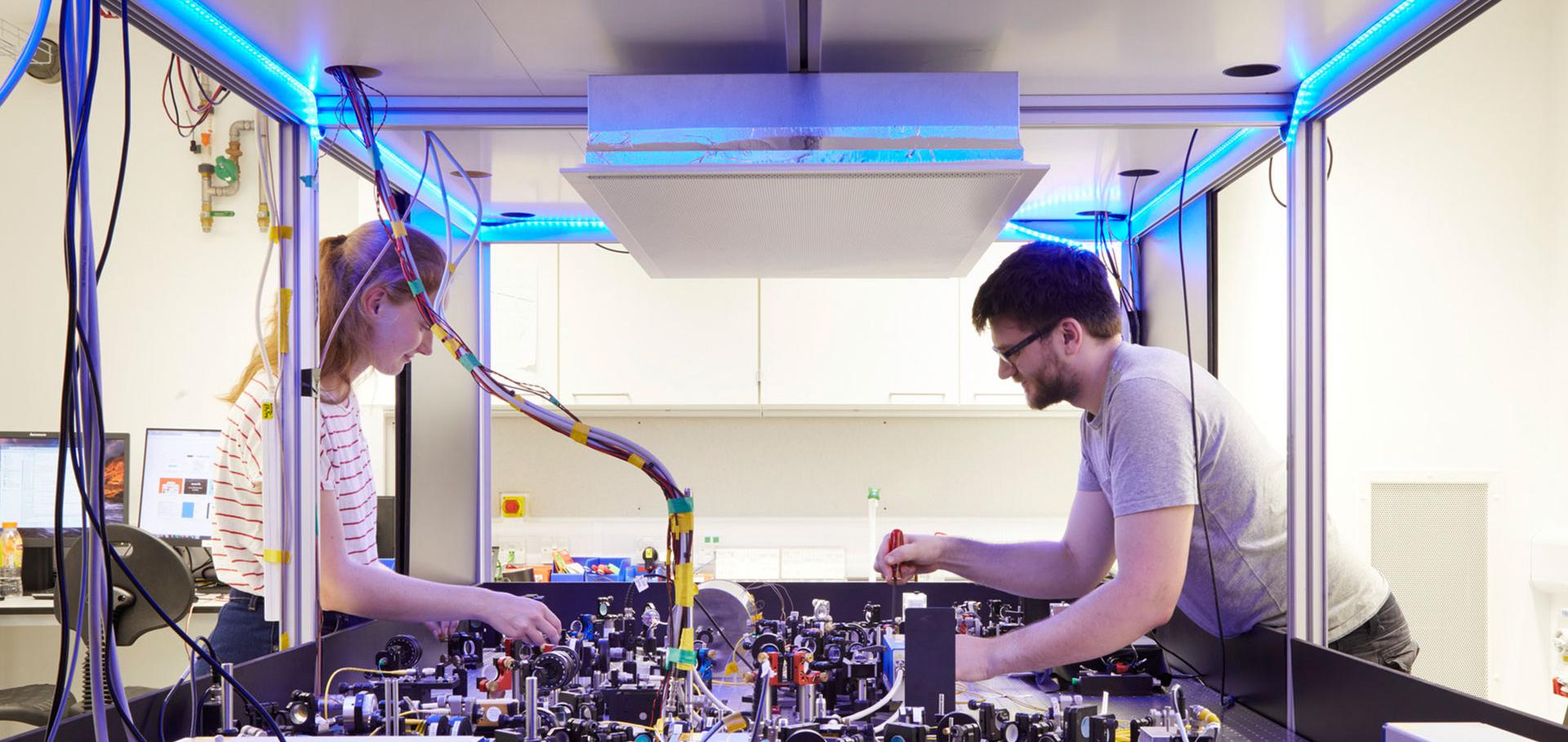Cryogenic ion trap system for high-fidelity near-field microwave-driven quantum logic
(2022)
[Data and analysis] Optimisation of scalable ion-cavity interfaces for quantum photonic networks
University of Oxford (2022)
Abstract:
Numerical data generated from python module available at DOI:10.5281/zenodo.7020047. Data are presented and analysed in arxiv 2112.05795Optimisation of Scalable Ion-Cavity Interfaces for Quantum Photonic Networks
ArXiv 2112.05795 (2021)
An optically heated atomic source for compact ion trap vacuum systems.
The Review of scientific instruments 92:3 (2021) 033205-033205
Abstract:
We present a design for an atomic oven suitable for loading ion traps, which is operated via optical heating with a continuous-wave multimode diode laser. The absence of the low-resistance electrical connections necessary for Joule heating allows the oven to be extremely well thermally isolated from the rest of the vacuum system. Extrapolating from high-flux measurements of an oven filled with calcium, we calculate that a target region number density of 100 cm-3, suitable for rapid ion loading, will be produced with 175(10) mW of heating laser power, limited by radiative losses. With simple feedforward to the laser power, the turn-on time for the oven is 15 s. Our measurements indicate that an oven volume 1000 times smaller could still hold enough source metal for decades of continuous operation.Effects of cavity birefringence in polarisation-encoded quantum networks
ArXiv 2008.11712 (2020)


